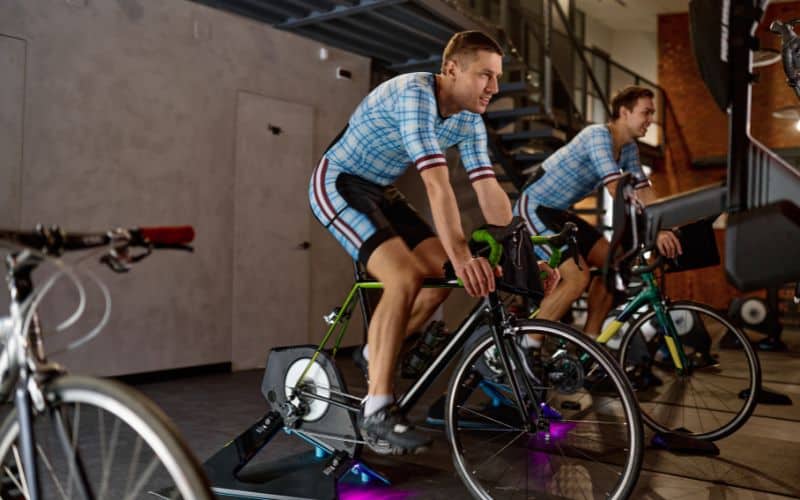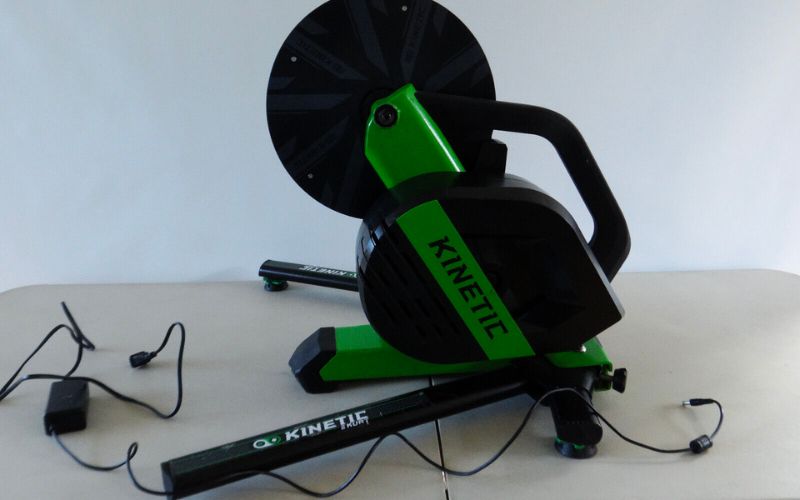Your bike’s longevity might seem at risk with a trainer.
Many cyclists worry about potential damage from using trainers. Questions about wear on tires, frames, and components are common. Understanding and addressing these concerns is crucial for safe, effective training.
Learn how proper use and maintenance can prevent trainer-related damage.
Understanding the Impact of Bike Trainers
The Truth About Carbon Frames and Trainers
Carbon frames, known for their lightweight and strength, are often scrutinized regarding trainer compatibility. The fear that clamping forces and stationary stress points could damage your frame is prevalent.
However, most modern carbon frames are designed to withstand the forces exerted by indoor trainers. Nevertheless, it’s important to follow manufacturer guidelines to ensure that clamping mechanisms are used correctly and avoid undue stress that could potentially damage your frame.

Advances in Trainer Design and Technology
The evolution of bike trainers has been impressive, offering features that ensure your bike’s safety and an improved training experience. Smart and turbo trainers now feature better stability, accurate power readings, and compatibility with various bike types.
Leaving your bike on the trainer for extended periods, however, can still create flat spots on your tire, so it’s recommended to release the resistance roller between sessions to extend the life of your equipment.
Modern Testing Protocols
Direct-drive trainers have altered the landscape of indoor cycling by eliminating rear-wheel wear. These trainers often undergo rigorous testing protocols to ensure compatibility and safety with various bike frames, including scrutinizing the rear triangle area.
Always consult your owner’s manual before using a trainer, as some manufacturers may specify that certain models are not trainer-compatible or that using one may void your warranty. This precaution ensures the longevity of both your bike and your trainer.
Features That Protect Your Bike
One of the most innovative features in the realm of indoor cycling is the rocker plate, which allows lateral movement simulating the natural side-to-side motion experienced while riding on the road.
This makes for a more realistic riding experience and reduces strain on the bike frame by allowing it to move as it would outdoors. Rocker plates help distribute pressure and prevent the bike from being locked in an unnatural, static position.
As you can see, modern bike trainers come with many protective measures for your beloved bike, but it’s still vital to use them correctly and check on your specific bike and trainer requirements.

Common Concerns with Trainer Usage
Wheel and Tire Wear During Trainer Sessions
Your rear tire can suffer significant wear when used on a trainer. You can mitigate this issue by:
- Disengaging the resistance roller when not using the trainer
- Switching to trainer-specific tires or wheels, which are more durable and resist heat better
Skewer Stress and Replacement Options
The skewer of your bike bears a lot of tension in a trainer. To address this:
- Use heavy-duty skewers, especially those supplied by trainer manufacturers
- Verify skewer compatibility if using a rocker plate to avoid damage
The Role of Trainer-Specific Tires
Trainer-specific tires are designed for the indoor cyclist’s needs:
- They last longer with a composition resistant to the heat and stress from trainers
- They reduce noise levels for a more pleasant riding experience
- Investing in these tires saves your regular tires from excessive wear
The Risks of Sweat Corrosion
Sweat can be a bike’s enemy during indoor training:
- Corrosion can begin where sweat collects, such as under the bar tape
- Be aware of sweat as a potential hazard and take steps to protect your bike
Protecting Sensitive Areas from Corrosion
Managing sweat to protect your bike is straightforward:
- Use towels or sweat guards to catch perspiration before it reaches your bike
- Cover areas like the handlebars, headset, and top tube to keep them dry
The Importance of Regular Maintenance
Staying diligent with bike care can substantially boost its lifespan:
- Perform regular cleaning to stave off corrosive damage from sweat
- Routine checks for wear and tear will keep you riding safely
- Always wipe down your bike after sessions and consider using products like Boeshield T-9 for protection
Frequently Asked Questions
Can using a trainer wear out my bike tires faster than riding outdoors?
When you use a wheel-on trainer, your rear tire experiences more friction in the same spot, which can cause it to wear down faster than it would on the road. To minimize wear:
– Use trainer-specific tires: These are tougher and less prone to wear.
– Regularly inspect and rotate your tire to spread out the wear.
Is it safe to mount a carbon frame bike on an indoor trainer?
Yes, it’s generally safe to mount a carbon frame bike on an indoor trainer. However, you should:
– Check the manufacturer’s guidelines: Some manufacturers advise against it or have specific instructions.
– Ensure proper mounting: Incorrect mounting can put undue stress on the frame.
How can I properly set up my bike on a trainer to prevent potential damage?
Proper setup is key to preventing damage:
– Follow the trainer’s manual: Set up the bike according to the specific instructions.
– Use the right skewer: A sturdy, trainer-compatible skewer is crucial for wheel-on trainers.
– Ensure stability: The bike should be securely mounted and level.
Are direct-drive trainers less likely to cause wear to my bike than wheel-on models?
Direct-drive trainers can reduce wear by removing the rear wheel, eliminating tire wear. Additionally, they provide a more stable connection, reducing stress on bike components.
Is it okay to leave my bike attached to the trainer for extended periods, or should I remove it after each session?
Removing your bike after each session is best because continuous clamping can stress your bike frame or skewer. Additionally, it allows your bike to “rest” and reduces potential strain from a fixed position.

